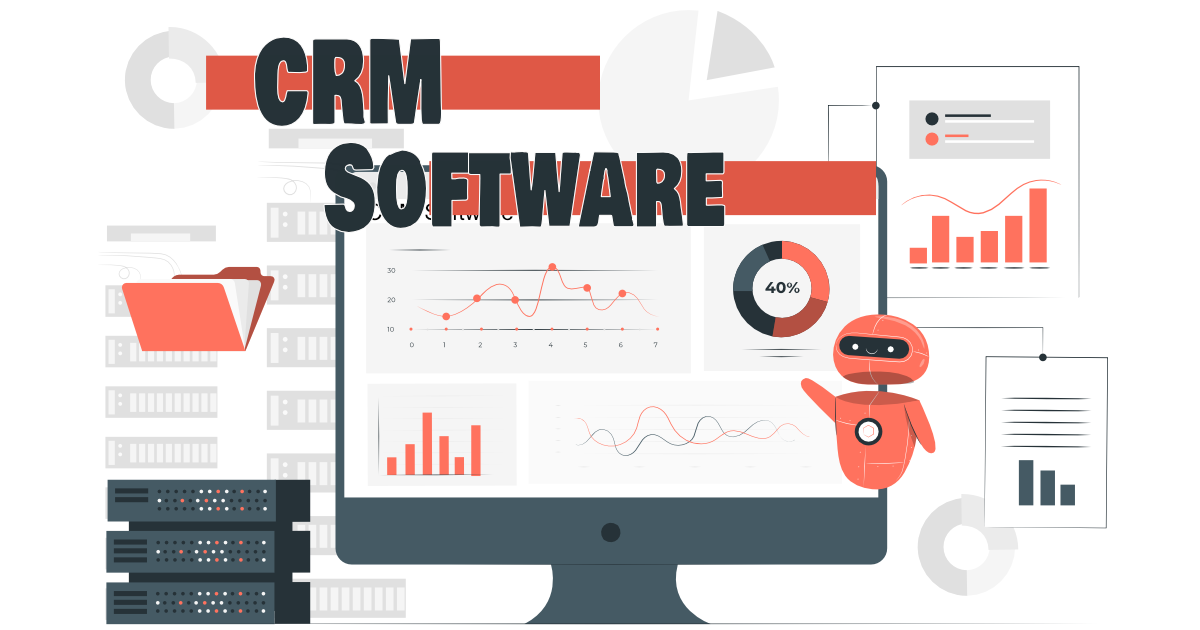Managing and analyzing sales performance is a critical aspect of any small business’s marketing and sales strategy. It involves tracking key metrics such as conversion rates, customer acquisition costs, and revenue growth, and using that data to make informed decisions about how to improve sales and grow the business. By understanding what is working and what isn’t, small business owners can make more effective use of their resources and stay competitive in today’s fast-paced business environment. In this series of articles, we will explore various techniques for managing and analyzing sales performance, including using data analytics tools, implementing effective sales processes, and building a strong sales team. Whether you are just starting out or looking to take your business to the next level, these strategies will help you achieve your goals and build a sustainable and successful business.
Understanding the importance of monitoring and analyzing sales performance
As a small business owner, it’s essential to have a clear understanding of how your sales are performing. This means tracking key metrics such as conversion rates, customer acquisition costs, and revenue growth, and using that data to make informed decisions about how to improve sales and grow the business. By regularly monitoring and analyzing your sales performance, you can identify areas that need improvement, set realistic goals for your business, and make data-driven decisions that will help you achieve those goals.
Why is it important to monitor and analyze sales performance?
- Identify areas for improvement: By tracking key metrics, small business owners can identify areas where their sales efforts are falling short and make adjustments to improve performance. For example, if you notice that your conversion rates are low, you may need to focus on improving your sales pitch or product offering.
- Set realistic goals: Understanding your current sales performance allows you to set realistic goals for your business. Without this understanding, it can be difficult to know what is possible and what is not.
- Make data-driven decisions: When you have a clear understanding of your sales performance, you can make data-driven decisions to improve it. This could include investing in new marketing strategies, hiring additional sales staff, or improving your sales process.
Examples of Metrics to Track
- Conversion rate: This is the number of customers who make a purchase divided by the number of visitors to your website or store. A high conversion rate is a good indication that your sales process is effective.
- Customer acquisition cost: This is the total cost of acquiring a new customer, including marketing and sales expenses. By tracking this metric, you can determine how much you are spending to acquire each new customer and make adjustments to reduce costs if necessary.
- Revenue growth: This is the rate at which your revenue is increasing over time. Tracking revenue growth can help you identify trends and make decisions about how to grow your business.
By regularly monitoring and analyzing your sales performance, you can make data-driven decisions that will help you achieve your business goals and improve your bottom line. By understanding the importance of monitoring and analyzing sales performance, and knowing the key metrics to track, small business owners can take control of their sales efforts and make the necessary adjustments to improve performance and grow their business.
Identifying key performance indicators (KPIs)
In order to effectively monitor and analyze sales performance, it’s important to identify the key performance indicators (KPIs) that are most relevant to your business. These are the metrics that will give you the most insight into how your sales efforts are performing and where you need to make improvements. Some common KPIs that small businesses track include conversion rates, customer acquisition costs, and revenue growth, but there are many others that can be relevant depending on the specific business.
Why is it important to identify KPIs?
- Focusing on the right metrics: By identifying the KPIs that are most relevant to your business, you can ensure that you are focusing on the metrics that will give you the most insight into how your sales efforts are performing.
- Making data-driven decisions: Knowing which metrics to track allows you to make data-driven decisions about how to improve sales performance and grow your business.
- Benchmarking: Identifying and tracking KPIs allows you to establish benchmarks for your business. This will help you to measure performance over time and identify areas that need improvement.
Examples of KPIs
- Sales per employee: This metric can help you determine how efficiently your sales team is operating. If you notice that one employee is consistently producing more sales than others, you may want to consider implementing the best practices that employee is using across your sales team.
- Average order value: This metric can help you determine the average value of an order. If you notice that the average order value is decreasing, you may want to consider ways to increase the value of each order.
- Repeat customer rate: This metric can help you understand how well you are retaining customers. If you notice that the repeat customer rate is low, you may want to consider ways to improve customer retention.
It’s important to note that no single KPI can give you a complete picture of your sales performance, it is important to track a variety of metrics to get a holistic view. You should also track these KPIs over time to see how they change, this will help you to identify trends and make data-driven decisions to improve your sales performance.
Setting sales targets and goals
Once you have identified the key performance indicators (KPIs) that are most relevant to your business, the next step is to set sales targets and goals. These targets and goals will help you to focus your efforts and measure progress towards achieving your business objectives.
Why is it important to set sales targets and goals?
- Focus: Setting targets and goals helps to focus your sales efforts on the most important aspects of your business.
- Measure progress: Setting targets and goals allows you to measure progress towards achieving your business objectives.
- Motivation: Setting targets and goals can also be a motivator for your sales team, as they will have something concrete to work towards.
Examples of Sales Targets and Goals
- Revenue: A common sales target is to achieve a certain level of revenue. For example, a small business may set a goal to increase revenue by 20% within the next year.
- Conversion rate: Another common sales target is to improve conversion rates. For example, a small business may set a goal to increase their conversion rate from 2% to 3% over the next quarter.
- Market share: A sales target can also be to increase market share. For example, a small business may set a goal to increase market share from 5% to 10% within the next two years.
It’s important to note that setting sales targets and goals should be done in alignment with overall business objectives and strategies. It is also important to be realistic and make sure that the targets and goals are achievable with the resources available. Additionally, it’s important to regularly review and adjust the targets and goals as needed, as the business and market conditions may change.
Utilizing data and analytics to track and measure sales performance
Once you have identified the key performance indicators (KPIs) and set sales targets and goals, the next step is to utilize data and analytics to track and measure your sales performance. This involves collecting and analyzing data on your sales efforts, and using that data to make informed decisions about how to improve performance and achieve your goals.
Why is it important to utilize data and analytics?
- Make data-driven decisions: By analyzing data, small business owners can make data-driven decisions about how to improve their sales performance and achieve their goals.
- Identify trends: Utilizing data and analytics allows small business owners to identify trends in their sales performance and make adjustments as needed.
- Track progress: Data and analytics can be used to track progress towards achieving sales targets and goals, allowing business owners to make adjustments as needed.
Examples of Tools for Data and Analytics
- Sales tracking software: There are many software options available that can help small business owners track and analyze sales data. These can include customer relationship management (CRM) software, sales performance management software, and sales forecasting software.
- Google Analytics: This is a free web analytics service offered by Google that tracks and reports website traffic. It can be used to track website visitors, conversion rates, and other key metrics.
- Excel: Microsoft Excel can be used to track and analyze sales data. It has many built-in functions and tools that can be used to analyze data and create charts and graphs.
It’s important to note that while utilizing data and analytics is crucial, it’s also important to keep in mind that data is only useful when it is acted upon. Collecting data and analyzing it is important, but it’s also important to use that data to make informed decisions and take action to improve sales performance. Additionally, it’s important to regularly review and update the data and analytics tools that you are using to ensure that they are providing you with the information that you need to make data-driven decisions.
In conclusion, managing and analyzing sales performance is crucial for small businesses to grow and succeed. By identifying key performance indicators, setting sales targets and goals, and utilizing data and analytics, small business owners can track and measure their sales performance, make data-driven decisions, and achieve their business objectives.
Creating and managing a sales dashboard
A sales dashboard is a visual representation of key performance indicators (KPIs) and other important sales data. It allows small business owners to quickly and easily see how their sales efforts are performing, and make data-driven decisions to improve performance.
Why is it important to have a sales dashboard?
- Easy to understand: A sales dashboard presents data in a visual format that is easy to understand and interpret.
- Real-time data: With a sales dashboard, small business owners can access real-time data and make decisions in a timely manner.
- Customizable: Sales dashboards can be customized to show the specific data and KPIs that are most relevant to a business.
Examples of Sales Dashboard Tools
- Google Data Studio: This is a free data visualization tool offered by Google that can be used to create custom dashboards. It can be connected to various data sources and used to create interactive and shareable dashboards.
- Tableau: Tableau is a data visualization tool that can be used to create custom dashboards. It offers a wide range of data visualization options and can be connected to various data sources.
- Microsoft Power BI: Power BI is a data visualization tool offered by Microsoft that can be used to create custom dashboards. It offers a wide range of data visualization options and can be connected to various data sources.
Creating and managing a sales dashboard is an ongoing process as the business and market conditions may change. It’s important to regularly review and update the data and KPIs that are being tracked, and make adjustments as needed. Additionally, it’s important to ensure that the sales dashboard is accessible to all relevant stakeholders, such as the sales team, so they can use the data to make informed decisions and improve their sales performance.
In conclusion, a sales dashboard is a valuable tool for small business owners to manage and analyze their sales performance. By creating and managing a sales dashboard, small business owners can access real-time data in an easy to understand format, make data-driven decisions, and achieve their sales targets and goals. There are many tools available to create a sales dashboard, and it is important to choose one that fits your business needs and budget.
Analyzing sales data to identify trends and patterns
One of the key benefits of utilizing data and analytics to track and measure sales performance is that it allows small business owners to identify trends and patterns in their sales data. By identifying these trends and patterns, small business owners can make data-driven decisions about how to improve their sales performance and achieve their goals.
Why is it important to analyze sales data to identify trends and patterns?
- Make informed decisions: By identifying trends and patterns in sales data, small business owners can make informed decisions about how to improve their sales performance and achieve their goals.
- Identify opportunities: Analyzing sales data can help small business owners identify new opportunities for growth and expansion.
- Monitor performance: By identifying trends and patterns in sales data, small business owners can monitor the performance of their sales efforts over time.
Examples of Tools for Analyzing Sales Data
- Excel: Microsoft Excel can be used to analyze sales data and identify trends and patterns. It has many built-in functions and tools that can be used to analyze data and create charts and graphs.
- R or Python: Both R and Python are programming languages that can be used to analyze sales data and identify trends and patterns. They have many built-in functions and libraries that can be used to analyze data and create charts and graphs.
- Business Intelligence (BI) software: BI software is a type of software that can be used to analyze sales data and identify trends and patterns. It can be used to create interactive visualizations and reports, and it can be connected to various data sources.
It’s important to note that while analyzing sales data can be beneficial, it’s also important to keep in mind that data is only useful when it is acted upon. Identifying trends and patterns in sales data is important, but it’s also important to use that information to make informed decisions and take action to improve sales performance.
Identifying areas for improvement and optimization
Once small business owners have identified trends and patterns in their sales data, the next step is to identify areas for improvement and optimization. By identifying areas for improvement and optimization, small business owners can take action to improve their sales performance and achieve their goals.
Why is it important to identify areas for improvement and optimization?
- Improve sales performance: By identifying areas for improvement and optimization, small business owners can take action to improve their sales performance and achieve their goals.
- Increase efficiency: Identifying areas for improvement and optimization can help small business owners increase the efficiency of their sales efforts.
- Lower costs: By identifying areas for improvement and optimization, small business owners can take action to lower costs and increase profitability.
Examples of Identifying Areas for Improvement and Optimization
- Sales process optimization: Analyze your sales process to identify areas where it can be streamlined and made more efficient.
- Lead generation: Analyze your lead generation efforts to identify ways to improve the quality and quantity of leads.
- Sales team performance: Analyze the performance of your sales team to identify areas where they need additional training or support.
- Product or service pricing: Analyze your product or service pricing to identify ways to make it more competitive.
- Marketing strategies: Analyze your marketing strategies to identify ways to improve the effectiveness of your campaigns.
In conclusion, identifying areas for improvement and optimization is an important step in managing and analyzing sales performance. By identifying areas for improvement and optimization, small business owners can take action to improve their sales performance and achieve their goals. It’s important to regularly review and analyze sales data to identify areas for improvement and optimization and make adjustments as needed.
Utilizing customer feedback and survey data to improve sales performance
In addition to analyzing sales data, small business owners can also utilize customer feedback and survey data to improve their sales performance. Customer feedback and survey data can provide valuable insights into customer needs, preferences, and satisfaction, which can be used to improve sales performance and achieve goals.
Why is it important to utilize customer feedback and survey data?
- Improve customer satisfaction: By understanding customer needs and preferences, small business owners can take action to improve customer satisfaction.
- Identify areas for improvement: Customer feedback and survey data can help small business owners identify areas for improvement in their products, services, and sales process.
- Increase customer loyalty: By taking action to improve customer satisfaction and address customer needs and preferences, small business owners can increase customer loyalty.
Examples of Utilizing Customer Feedback and Survey Data
- Customer surveys: Customer surveys can be used to gather feedback on products, services, and the sales process. Surveys can be conducted online, by phone, or in person.
- Net Promoter Score (NPS): NPS is a measure of customer satisfaction and loyalty, and it can be used to track customer feedback over time.
- Social media monitoring: Social media can be used to monitor customer feedback, and it can provide valuable insights into customer needs and preferences.
In conclusion, utilizing customer feedback and survey data is an important step in managing and analyzing sales performance. By understanding customer needs and preferences, small business owners can take action to improve customer satisfaction, identify areas for improvement, and increase customer loyalty. It’s important to regularly gather and analyze customer feedback and survey data and make adjustments as needed.
Providing regular sales reports and updates
In addition to managing and analyzing sales performance, small business owners should also provide regular sales reports and updates to key stakeholders. Sales reports and updates can help keep everyone informed about the current state of the business and can help identify any issues or opportunities for improvement.
Why is it important to provide regular sales reports and updates?
- Transparency: By providing regular sales reports and updates, small business owners can promote transparency and open communication with key stakeholders.
- Identify issues: Regular sales reports and updates can help identify any issues or problems that need to be addressed.
- Make informed decisions: By providing regular sales reports and updates, small business owners can make informed decisions about the business.
Examples of Providing Regular Sales Reports and Updates
- Monthly sales reports: Monthly sales reports can be provided to key stakeholders, including management, investors, and employees.
- Sales performance dashboards: Sales performance dashboards can be used to provide real-time updates on sales performance.
- Email updates: Email updates can be used to provide regular sales reports and updates to key stakeholders.
In conclusion, providing regular sales reports and updates is an important step in managing and analyzing sales performance. By providing regular sales reports and updates, small business owners can promote transparency and open communication with key stakeholders, identify issues and make informed decisions. Regular sales report and updates are essential to measure the progress of the business, set targets and goals, and track the progress towards achieving them.
Building and managing a sales forecasting model
In addition to managing and analyzing sales performance, small business owners should also build and manage a sales forecasting model. A sales forecasting model is a tool that helps small business owners predict future sales based on past data and other factors. By building and managing a sales forecasting model, small business owners can make more informed decisions about the business and anticipate any potential problems or opportunities.
Why is it important to build and manage a sales forecasting model?
- Predict future sales: Sales forecasting models can help small business owners predict future sales, which can be used to make more informed decisions about the business.
- Anticipate potential problems: Sales forecasting models can help small business owners anticipate potential problems and take action to mitigate them.
- Identify opportunities: Sales forecasting models can help small business owners identify opportunities for growth and expansion.
Examples of Building and Managing a Sales Forecasting Model
- Time series forecasting: Time series forecasting is a method that uses historical data to predict future sales.
- Regression analysis: Regression analysis is a statistical method that can be used to identify relationships between variables and predict future sales.
- Artificial Intelligence and Machine Learning: Utilizing AI and ML can be a powerful tool in sales forecasting by analyzing a vast amount of data and predicting future sales.
In conclusion, building and managing a sales forecasting model is an important step in managing and analyzing sales performance. By building and managing a sales forecasting model, small business owners can predict future sales, anticipate potential problems, and identify opportunities. Sales forecasting models can be a powerful tool for small business owners, and it is crucial to regularly review and update the model based on new data and changing market conditions.
Utilizing tools for pipeline management and forecasting
In addition to building and managing a sales forecasting model, small business owners should also utilize tools for pipeline management and forecasting. Pipeline management and forecasting tools help small business owners manage and track potential sales opportunities and predict future sales. By utilizing these tools, small business owners can make more informed decisions about the business and anticipate any potential problems or opportunities.
Why is it important to utilize tools for pipeline management and forecasting?
- Manage potential sales opportunities: Pipeline management and forecasting tools help small business owners manage and track potential sales opportunities.
- Predict future sales: Pipeline management and forecasting tools can be used to predict future sales based on the status of potential sales opportunities.
- Identify trends and patterns: Pipeline management and forecasting tools can help small business owners identify trends and patterns in potential sales opportunities.
Examples of Utilizing Tools for Pipeline Management and Forecasting
- CRM software: Customer Relationship Management (CRM) software can be used to manage and track potential sales opportunities.
- Sales forecasting software: Sales forecasting software can be used to predict future sales based on the status of potential sales opportunities.
- Sales pipeline management software: Sales pipeline management software can be used to manage and track potential sales opportunities and predict future sales.
In conclusion, utilizing tools for pipeline management and forecasting is an important step in managing and analyzing sales performance. By utilizing these tools, small business owners can manage and track potential sales opportunities, predict future sales, and identify trends and patterns in potential sales opportunities. It’s important to regularly review and update the pipeline management and forecasting tools based on new data and changing market conditions.
Identifying and addressing underperforming salespeople
In addition to utilizing tools for pipeline management and forecasting, small business owners should also focus on identifying and addressing underperforming salespeople. Underperforming salespeople can have a significant impact on a small business’s overall sales performance, and it is important for small business owners to identify and address these issues in order to improve overall sales performance.
Why is it important to identify and address underperforming salespeople?
- Improve overall sales performance: Addressing underperforming salespeople can help improve overall sales performance.
- Increase productivity: Addressing underperforming salespeople can help increase productivity and efficiency.
- Better customer service: Addressing underperforming salespeople can lead to better customer service and satisfaction.
How to Identify Underperforming Salespeople
- Sales figures: One of the most obvious ways to identify underperforming salespeople is by looking at their sales figures. If a salesperson’s sales figures are consistently lower than those of their peers, it is likely that they are underperforming.
- Meeting or exceeding sales targets: Salespeople who are consistently failing to meet or exceed their sales targets are likely underperforming.
- Feedback from customers: Feedback from customers can provide valuable insight into the performance of salespeople. If customers are consistently providing negative feedback about a salesperson, it is likely that they are underperforming.
- Missed opportunities: Salespeople who consistently miss out on sales opportunities are likely underperforming.
Addressing Underperforming Salespeople
- Understand the root cause: Understanding the root cause of a salesperson’s underperformance is essential in addressing the issue. It could be a lack of training, lack of motivation, or a lack of sales skills.
- Provide training and development: Providing training and development opportunities can help salespeople improve their skills and performance.
- Provide feedback and coaching: Providing regular feedback and coaching can help salespeople understand where they need to improve and what they need to do to improve their performance.
- Set clear goals and expectations: Setting clear goals and expectations can help salespeople understand what is expected of them and what they need to do to meet those expectations.
- Identify and address any issues: If a salesperson is facing any personal or professional issues that may be affecting their performance, it is important to address these issues and provide support if necessary.
Examples of Identifying and Addressing Underperforming Salespeople
- Setting and monitoring sales targets: Small business owners should set and monitor sales targets for each salesperson and address any issues if the targets are not met.
- Performance evaluations: Small business owners should conduct regular performance evaluations to assess the performance of each salesperson.
- Providing training and development: Small business owners should provide training and development opportunities for underperforming salespeople to help them improve their skills and performance.
In conclusion, identifying and addressing underperforming salespeople is an important step in managing and analyzing sales performance. By identifying and addressing underperforming salespeople, small business owners can improve overall sales performance, increase productivity, and provide better customer service. It’s important to regularly evaluate the performance of each salesperson, provide training and development opportunities, and set and monitor sales targets. By doing so, small business owners can take steps to improve the performance of underperforming salespeople and drive overall sales performance.
Providing ongoing coaching and feedback
Providing ongoing coaching and feedback is an essential aspect of managing and analyzing sales performance. It is important for small business owners to provide regular coaching and feedback to their sales team in order to help them improve their performance and drive overall sales performance.
Why is it important to provide ongoing coaching and feedback?
- Improve sales performance: Ongoing coaching and feedback can help salespeople improve their performance and drive overall sales performance.
- Increase productivity: Ongoing coaching and feedback can help increase productivity and efficiency.
- Better customer service: Ongoing coaching and feedback can lead to better customer service and satisfaction.
Best Practices for Providing Ongoing Coaching and Feedback
- Be specific: Provide specific feedback on what the salesperson did well and where they need to improve.
- Be timely: Provide feedback and coaching as soon as possible after an event or a meeting.
- Be constructive: Provide feedback that is aimed at helping the salesperson improve their performance.
- Be consistent: Provide feedback and coaching on a regular basis, not just when there is a problem.
- Be open-minded: Be open to feedback from the salesperson and be willing to make changes based on their feedback.
By following these best practices, small business owners can ensure that their coaching and feedback is effective and helps to improve the overall sales performance of their business. Additionally, salespeople will appreciate the focus on improvement and will be more likely to respond positively to the feedback.
Examples of Providing Ongoing Coaching and Feedback
- One-on-one meetings: Small business owners should schedule regular one-on-one meetings with each salesperson to provide feedback and coaching.
- Performance evaluations: Small business owners should conduct regular performance evaluations to assess the performance of each salesperson and provide feedback.
- Role-playing: Small business owners can use role-playing to provide feedback and coaching on specific sales scenarios.
- Customer feedback: Utilizing customer feedback to provide salespeople with insight into areas of improvement.
In conclusion, providing ongoing coaching and feedback is an essential aspect of managing and analyzing sales performance. By providing regular coaching and feedback, small business owners can help salespeople improve their performance and drive overall sales performance. Ongoing coaching and feedback can also increase productivity and lead to better customer service. It’s important to schedule regular one-on-one meetings, conduct regular performance evaluations, use role-playing and utilize customer feedback to provide coaching and feedback to salespeople. By doing so, small business owners can take steps to improve the overall sales performance of their business.
Utilizing performance metrics to inform sales strategy
One of the key benefits of managing and analyzing sales performance is the ability to utilize performance metrics to inform sales strategy. By regularly monitoring and analyzing key performance indicators, small business owners can gain a better understanding of their sales performance and identify areas where changes to their sales strategy may be needed.
Why is it important to utilize performance metrics to inform sales strategy?
- Identify areas of weakness: By regularly monitoring performance metrics, small business owners can identify areas of weakness in their sales strategy and make changes to improve performance.
- Make data-driven decisions: By utilizing performance metrics to inform sales strategy, small business owners can make data-driven decisions that are more likely to result in success.
- Monitor progress: Regularly monitoring performance metrics allows small business owners to track progress and make adjustments as needed.
Examples of Utilizing Performance Metrics to Inform Sales Strategy
- Sales conversion rate: By monitoring the sales conversion rate, small business owners can identify areas where changes to their sales strategy may be needed.
- Customer churn rate: By monitoring the customer churn rate, small business owners can identify areas where changes to their sales strategy may be needed to retain customers.
- Sales revenue: By monitoring sales revenue, small business owners can identify areas where changes to their sales strategy may be needed to increase revenue.
- Sales pipeline: By monitoring the sales pipeline, small business owners can identify areas where changes to their sales strategy may be needed to increase the number of deals closed.
In conclusion, utilizing performance metrics to inform sales strategy is an important aspect of managing and analyzing sales performance. By regularly monitoring and analyzing key performance indicators, small business owners can gain a better understanding of their sales performance and identify areas where changes to their sales strategy may be needed. By utilizing tools for pipeline management and forecasting, and providing regular sales reports and updates, small business owners can stay on top of their sales performance and make data-driven decisions to improve their sales strategy. Additionally, by providing ongoing coaching and feedback, small business owners can support their sales team and ensure they are equipped to meet sales targets and goals. By utilizing customer feedback and survey data, and analyzing trends and patterns in sales data, small business owners can identify areas for improvement and optimization. In order to achieve success in the competitive world of small business, it is crucial to stay on top of sales performance and make data-driven decisions to improve sales strategy.
Continuously improving and refining the sales performance management process
Managing and analyzing sales performance is an ongoing process that requires continuous improvement and refinement. Small business owners must stay on top of their sales performance and make adjustments as needed to achieve success.
Why is it important to continuously improve and refine the sales performance management process?
- Stay competitive: The business world is constantly changing and evolving, so it is important for small business owners to stay competitive by continuously improving and refining their sales performance management process.
- Respond to market changes: By continuously monitoring and analyzing sales performance, small business owners can quickly respond to market changes and make adjustments as needed.
- Improve sales performance: By continuously improving and refining the sales performance management process, small business owners can improve sales performance and achieve better results.
Examples of Continuously Improving and Refining the Sales Performance Management Process
- Regularly review and update sales targets and goals: By regularly reviewing and updating sales targets and goals, small business owners can ensure they are aligned with market conditions and the current state of their business.
- Regularly review and update sales strategies: By regularly reviewing and updating sales strategies, small business owners can stay competitive and respond to market changes.
- Regularly review and update sales performance metrics: By regularly reviewing and updating performance metrics, small business owners can ensure they are tracking the right data and making data-driven decisions.
- Regularly review and update sales dashboards: By regularly reviewing and updating sales dashboards, small business owners can ensure they are tracking the right data and making data-driven decisions.
In conclusion, managing and analyzing sales performance is an ongoing process that requires continuous improvement and refinement. By staying on top of sales performance, regularly reviewing and updating sales targets and goals, strategies, performance metrics, and dashboards, small business owners can ensure they are competitive, responsive to market changes and achieve better sales performance. It is important to be proactive and continuously monitor, analyze, and improve the sales performance management process to achieve success.













